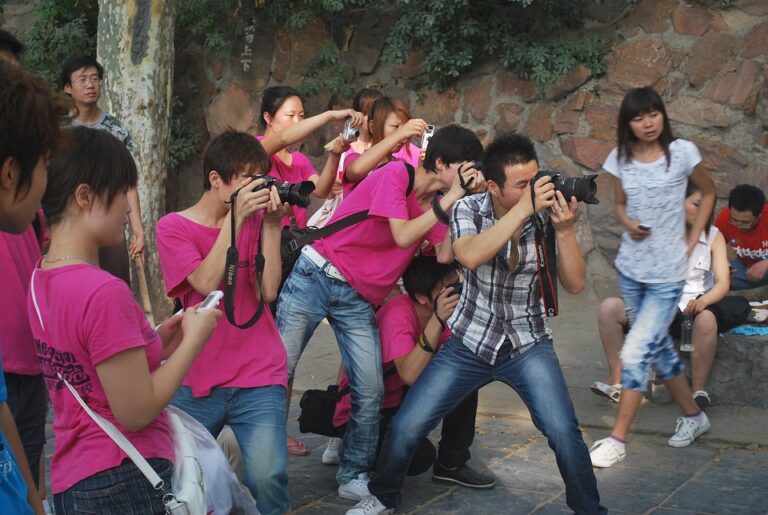Caught in the Moment: The Impact of Paparazzi Shots on Celebrity Culture
In the glittering world of celebrity culture, few elements are as influential—and controversial—as paparazzi shots. These candid captures of celebrities in their day-to-day lives offer a unique glimpse into their private moments, yet they also raise important ethical questions about privacy and the human cost of fame. This article delves into the multifaceted impact of paparazzi shots on both celebrities and society at large.
The Rise of Paparazzi Culture
Paparazzi shots have become a staple of tabloid journalism, with the demand for celebrity news fueling an industry that thrives on the unexpected. The globalization of media and the advent of social media have intensified this phenomenon. According to a survey by the Pew Research Center, 59% of adults in the U.S. frequently follow celebrity news and gossip—a reflection of our collective fascination with the lives of the famous.
The Psychological Toll on Celebrities
While many may see paparazzi shots as mere entertainment, they can have severe psychological effects on the subjects being photographed. Celebrities often find themselves facing relentless scrutiny and invasion of privacy. For instance, actress Demi Lovato has been vocal about how constant media attention harmed her mental health, illustrating the darker side of fame.
Paparazzi shots frequently depict these stars in unguarded moments, which can be particularly damaging following personal struggles or public controversies. The pressure to maintain a polished public image can lead to anxiety, depression, and even substance abuse among those in the limelight.
Celebrity Reactions to Paparazzi
Not all celebrities respond to paparazzi in the same way. While some embrace the media attention, others are more vocal in their opposition. Jennifer Aniston, for example, has been outspoken about her distaste for paparazzi culture, arguing that it feeds an unflattering narrative about her life. Similarly, Britney Spears famously battled against the paparazzi’s intrusive presence during her early 2000s crisis, which many believe contributed to her mental breakdown.
The Dual Effect: Fame and Infamy
Paparazzi shots serve a dual purpose: they can both elevate a celebrity’s status and contribute to their undoing. The constant exposure can lead to an increase in public interest, sometimes transforming an ordinary individual into a household name overnight. A striking example is Kim Kardashian, who transitioned from a socialite to a global brand largely through her relentless media coverage, some of which stemmed from paparazzi shots.
Conversely, while these images may offer short-lived fame, they can also fuel scandals and controversies that overshadow a celebrity’s career. Kanye West’s infamous outbursts and the subsequent paparazzi coverage brought attention to his struggles but also sparked discussions about whether this type of scrutiny is necessary or humane.
Legal and Ethical Boundaries
As the impact of paparazzi shots continues to evolve, so too does the legal framework surrounding them. In recent years, several high-profile cases have led to renewed discussions about the legality of aggressive paparazzi tactics. For instance, in California, the California Assembly Bill 606 was passed to protect the privacy rights of celebrities, making it illegal for paparazzi to use drones or other invasive methods to capture images without consent.
These legal developments are a response to growing public concern about the ethical implications of paparazzi culture. A 2022 Gallup poll showed that 65% of Americans believe celebrities deserve the same privacy rights as everyone else, highlighting a significant shift in public opinion.
The Cultural Influence of Paparazzi Shots
Despite—or perhaps because of—the ethical dilemmas, paparazzi shots have left an indelible mark on our culture. They shape public perception and influence fashion trends, lifestyle choices, and even political discussions. For instance, a candid shot of a star wearing a particular outfit can lead to massive spikes in sales for that brand, illustrating how intertwined celebrity culture and consumerism have become.
Moreover, the relentless pursuit of authentic moments has prompted celebrities to curate their own social media images. This self-staging is often a response to control the narrative that paparazzi shots create. Ultimately, the line between authentic and manufactured moments blurs, reflecting a complex interplay between reality and perception.
Conclusion
Paparazzi shots are more than mere snapshots; they embody the complex relationship between celebrity culture and societal values. While they offer an exhilarating glimpse into the lives of the famous, they also raise significant ethical concerns regarding privacy and mental health. As public opinion shifts and laws evolve, the future of paparazzi culture remains to be seen.
To explore more about the implications of celebrity culture, check out our articles on Celebrity Mental Health and The Dark Side of Fame. For further insights into the ethics of paparazzi photography, visit reputable sources like the American Society of Media Photographers and Pew Research Center.

Alt text: Paparazzi shots capturing a celebrity candidly.

Alt text: A celebrity surrounded by paparazzi.
The world of paparazzi shots is as thrilling as it is troubling—one that continues to captivate audiences even as it demands a careful examination of its human costs.


